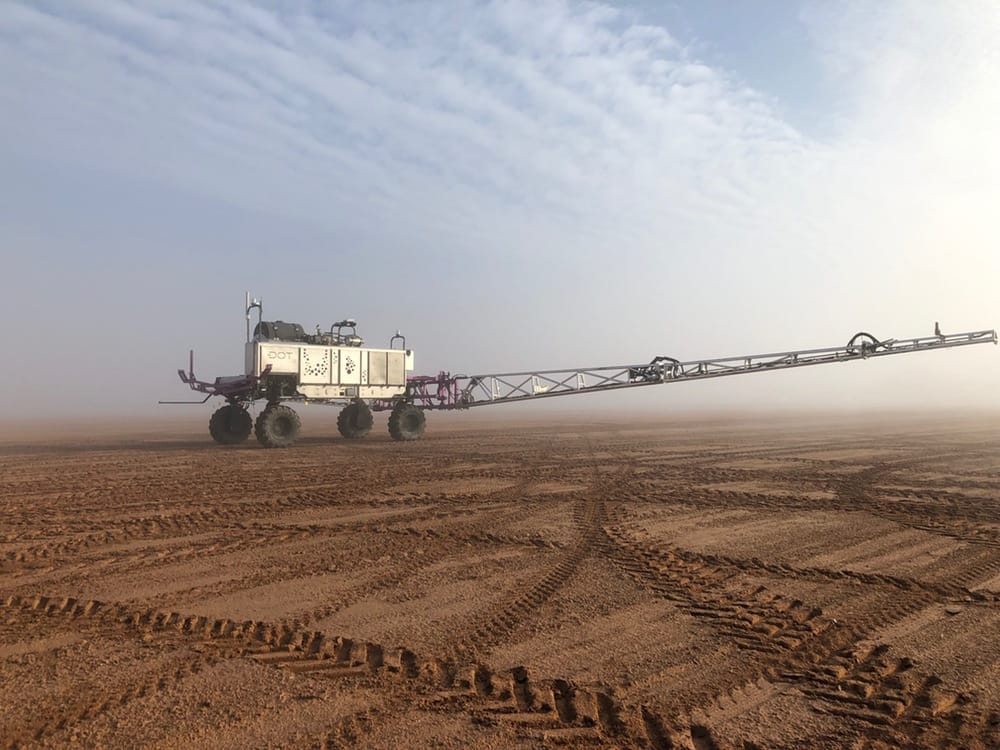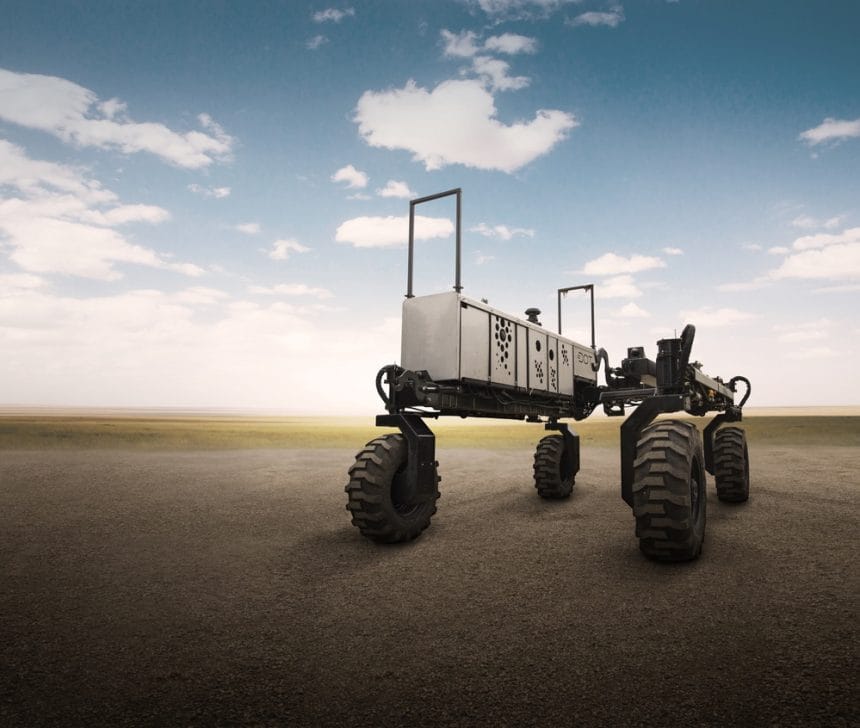Many people may think of automation as a concept that’s still 10-20 years away. However, Dot might be the best real-life example of automation in agriculture today. Leah Olson, the CEO of SeedMaster and Dot, along with her companies are playing a crucial role in the future of automation in agriculture. Headquartered in Saskatchewan, Canada, Olson took some time to answer some questions about what Dot means for the industry.
About DOT
Founded by Norbert Beaujot, a farmer and professional engineer, Dot Technology Corp. has built powered u-shaped frame that’s built to provide a path for shortline manufacturers to fast track their transition into autonomous farming by offering them the opportunity to engineer their equipment to be Dot-ready. The Dot-ready implement can then be loaded directly onto the U-shaped frame to become one with the powered platform. Seedotrun.com has some great videos showcasing it in action.

What has been the initial feedback from your customers?
Dot Technology Corp. is excited about their limited release of the Dot A-U1 power platform for spring seeding 2019. With that being said, feedback from customers is yet to be seen. What we can say is that farmers, and potential customers, are extremely engaged in the idea of autonomous farming. Even those who approach the subject with apprehension, quickly change their perception of autonomous farming as soon as they see that Dot is not just a concept, but a functional piece of equipment.
This technology is great but it’s going to be useless unless the end user, which is the farmer, in this case, can afford it. How far out are we from this being affordable and mainstream?
When placed head-to-head with a tractor, the A-U1 platform has been priced competitively. The cost savings is proven by the significant downscaling in power required for the unit, implement size and materials needed. Farmers who are considering making the transition to autonomous farming will also experience the savings that come from the continuous development of Dot’s artificial intelligence capabilities. As Dot becomes capable of making similar decisions to that of a farmer in the field, there is less of a need for supervision and the associated labor costs. Dot reduces greenhouse gas emissions and creates efficiencies such as approximately 20 percent savings on fuel, labor and equipment capital costs, resulting in a reimagination of how farming is and can be done.
Additionally, the Dot-ready implements offered by other short line manufacturers will be less expensive (without sacrificing quality) by virtue of their design; being carried instead of towed. This removes the added costs of extra steel, hitches, wheels, axles and miscellaneous parts required to tow an implement.
With the continual growth in short line manufacturers offering Dot-Ready implements, farmers can perform more on-farm activities autonomously and continue to realize savings in equipment investments and labor costs on their farms.
To make this technology mainstream, it’ll take early adoption from some farmers. Have you found that farmers are excited about this technology?
Farmers are very excited about autonomous farming. This evolution in technology will give them the opportunity to focus on the success of their farming operation, reduce the taxation on their bodies from hours spent in the cab of a tractor and increase their quality of life by giving them more time to focus on family, friends and other activities.
As technology advances on the farm, how are farmers keeping up with the work that needs to be done on these machines? For example, farmers just had to know about mechanics to fix a broken down combine, however, as technology advances, it is becoming more and more complicated. Are you concerned about their being the proper IT support in rural communities to help fix problems when something breaks down?
Mechanically, the platform is similar to equipment that farmers currently have on their farms. For the most part, this aspect should be quite familiar to them. That being said, we have a team of Product Support Specialists who play a huge role in ensuring customers will receive the service they require to keep their equipment up and running. In areas that are software or IT related, Dot Technology Corp. has the ability to service the equipment remotely using their strong team of developers. The team is trained and ready to troubleshoot and diagnose issues from afar.
26,400 agriculture-related jobs went unfilled across Canada in 2014.
The same study also predicts that number will increase to 114,000 unfilled jobs by 2025 – more than 25 percent of the entire agricultural labor force.
-The Canadian Agricultural Human Resource Council (CAHRC)
When the average person looks at this, and automation in general, they probably think of jobs being replaced. What would you say to them to get them excited about automation?
Although this is a common concern, one of the main objectives of the founder, Norbert Beaujot, was to create a means of attracting a younger generation to the ag industry. As technology continues to evolve at a fast pace, many people entering the workforce are interested in technology-driven occupations. By creating a farming implement that operates autonomously, Dot Technology Corp. is creating a new area of employment within the agricultural industry.
How many partnerships does Dot have? Are you confident that more and more manufacturers will work with Dot?
Dot Technology Corp. currently has three manufacturers who are building Dot-ready implements. Of these three, Dot can operate as a spin spreader, sprayer and air seeder. Additionally, there are a few additional implements that are in the early testing phases, including a roller, harvest cart and coulter. Dot Technology Corp. is involved in a variety of discussions with other prospective partners regarding the development of other Dot-ready implements and over the months and years to come will continue to add to the variety of tasks Dot can perform.
What’s next for DOT?
Dot was created from a place of innovation and the pursuit of infinite possibilities. It looks to challenge what is by fearlessly moving towards changing the way we perceive traditional agricultural practices. As the concept of autonomous farming continues to explore a variety of farming applications, opportunities will continue to present themselves beyond the boundaries of farming with an end goal to simplify a multitude of tasks performed by heavy equipment.
How it works
1. Dot has a variety of manufacturers that it works with to produce equipment that’s compatible with Dot. Right now, Dot can operate as a spin spreader, sprayer or air seeder.
2. Once Dot is connected with the equipment, the farmer then uses a computer program to generate a path for each field.
3. Once the path is farmer approved, Dot will then autonomously complete that path.
4. If there are any concerns, Dot will automatically stop. Dot can also be stopped via tablet, remote control or a separate remote e-stop.










